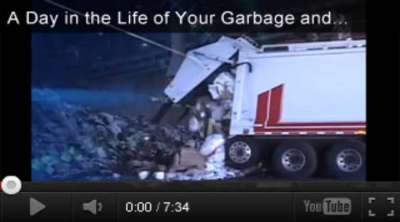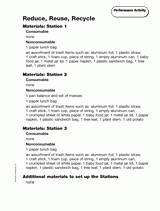Conserve Energy & Reduce Waste
Encourage students to recycle as much as they can throughout the day – and especially after snack time and lunch. These breaks in the school day can result in a lot of garbage. Use the organic waste to start a compost bin at your school. This is an engaging way to teach students about soil and agriculture. You can also reuse milk cartons, cans, cereal boxes, paper bags, and other materials for recycled arts and crafts projects. Some fun projects include making recycled bird feeders, can creatures, critters, and sculptures. Hold a contest in your classroom to see whether students can make a no-waste sack lunch. If you bring your lunch to school in a disposable bag, switch to a reusable sack or lunchbox made from recycled materials, to cut down on waste. Encourage your students to do the same.
As energy costs climb, they are putting a greater strain on school-district budgets. Conserving water and electricity will reduce waste and save your school money. Create a rotating list of students who are in charge of checking the faucets, computers, and lights in the classroom at the end of each day, to ensure that everything is turned off.
Transitioning from disposable to sustainable products in your classroom can greatly reduce your impact on the environment. Your behavior and habits have the power to influence your students' behavior and habits. Be a positive role model for your students by using a ceramic mug or aluminum water bottle instead of disposable coffee cups and plastic water bottles. Encourage your students to replace their disposable juice boxes and soda cans with reusable alternatives, which come in a variety of fun colors and styles. You could even reward your students for outstanding academic performance, attendance, or behavior with these eco-friendly water bottles.
In general, choose pencils over pens. Pencils are made from a renewable resource, which is better for the environment than the plastic and chemicals in pens. You can make the most of going green by using pencils made from 100% recycled materials. If you insist on pens, use ones that are refillable. Refillable pens and pencils made from recycled materials save trees and reduce consumption of PVC plastics. And because you only need to buy the refill inserts, they will save you money.
If you have windows in your classroom, close the blinds in the summer to keep the sun out. Open them in the winter to let the sun in. These simple steps can reduce the energy costs associated with heating and cooling your classroom. Another way to go green is to replace the regular alkaline batteries in your classroom with rechargeable batteries. This change will reduce waste as well as your contribution to global warming, air pollution, and water pollution. While rechargeable batteries have a higher initial cost, they offer long-term economic benefits because they are reusable.
Keeping plants in your classroom can improve air quality and teach students about the important role of plants in our lives. Construct a mini-greenhouse in your classroom using an old egg carton, a shoe box, and plastic wrap. You can conserve water consumption by using clean, reclaimed rainwater instead of tap water to water classroom plants.















